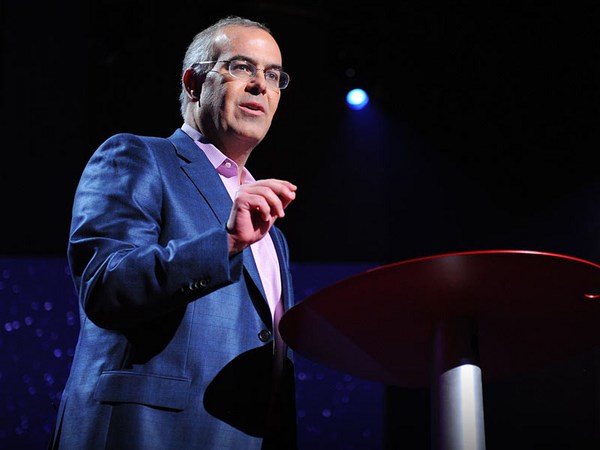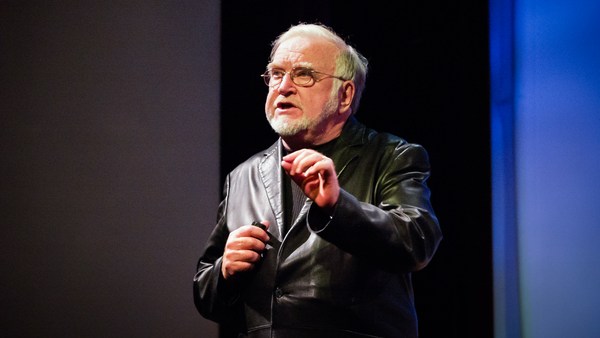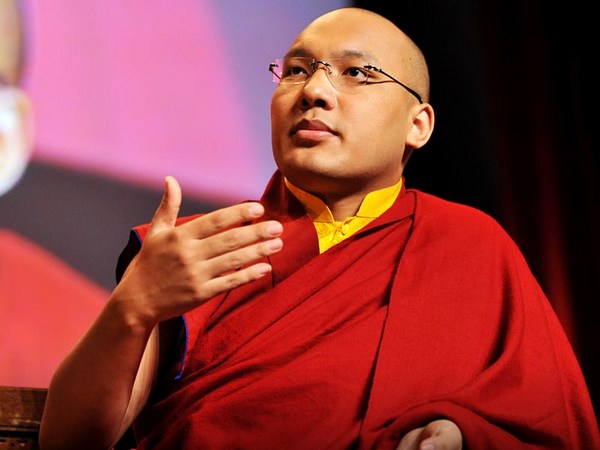Good morning. (Ethereal music) It has been quite a privilege being able to grow up in two quite different ways of life. I was born in Germany, and at the same time had the chance to learn more about an ancient art coming from the Shaolin Temple. When you grow up in an Asian family, it is quite common that firstly, you don't argue with your father, and secondly, you either become medical doctor, engineer, or lawyer. Elsewise your parents will be very unhappy. So having that said, I finished my academic education with two university degrees, an MBA, and quite a collection of different certificates and diplomas - everything that my parents thought would be useful to have. But throughout this education, I felt something was missing. Because I was learning about many different aspects - how the plant is working, what an atom is made out of, how a political system is functioning, but somehow, the subject was missing to learn something about myself. So with the age of four, for the first time I got introduced into the monastic practices, and I was very happy to find out that the main part of these practices were dealing with the exploration and the discovery of yourself. There was mental training, development of behavior combined with the physical training, all aspects of what nowadays is known as Shaolin Kung-Fu. Now, despite the wishes of my parents to somehow go out in the market and try to manage the world, I decided to continue this monastic life and start learning more about myself first. Now, in the preparation for this talk, I was asked to share a few words on what is important in this lifetime, and see, it's already challenging to put three decades into a single talk. But the picture I would like to show you summarizes very much what I consider as being valuable in this lifetime. There is something about sharing with others. There is something about connection. There is the training and development of yourself. It is to enjoy your time, even doing nothing. And one main aspect is to find a way and do the things you like to do. Now, when I received the invitation to have a talk at today's event, especially under the slogan "High, Higher, Highest," something very particular came up on my mind, and a master from the Shaolin Temple once told me a story that I would like to share with you. (Flute music) A man was living close to a mountain, and every day he was thinking: How would it be to climb that mountain and what would I see on the peak? So finally, the day came, and the man went on the journey. Arriving at the foot of the mountain, he met the first traveler. So he asked, "How did you get up the mountain, and what did you see from the top?" And so the traveler shared his path, and also the view that he had. But then the man was thinking, "The way that this traveler described to me sounds very exhausting. I need to find another way to climb." So he continued to walk on the foot of the mountain until he met the next traveler. So once again he asked, "How did you climb up that mountain, and what did you see from the top?" And so again the traveler shared his story. Still not being determined on which direction and which way to go, the man asked 30 more people, 30 more travelers. When he finished talking to all of them, he finally made up his mind. "Now that so many people already shared with me their paths and especially what they all saw from the top, I don't need to climb there anymore." It is very unfortunate this man never went on the journey. Now, to conclude this story, firstly, each individual needs to find the most suitable way to climb that mountain. But secondly, there is information possible to be shared with words, but it is impossible to share the experience of clarity when you are standing on that peak by yourself. To invest the right effort in climbing that peak, it's very much what all the Buddhist practices, the Shaolin training, or any spiritual practice is about. Clarity means you see more clear. When you see more clear, interrelations become more apparent. When you see more clear, there is no need to believe anyone or believe anything. Seeing clear means you can distinguish for yourself which is the proper direction to take and which decisions do I have to make in order to make my goals or aspirations start to shape? Now, at today's talk, you will have the chance to become inspired by quite a lot of different travelers. But in this particular talk, I can't, and I won't tell you which way to go. It's just that along your personal journey, you will encounter challenges. Those challenges will either prevent you, or some of them even stop you, from moving on and climbing that mountain. In the Shaolin Temple, we refer to them as "the five hindrances." The five hindrances are describing different states of the mind. In those states of the mind, it becomes very hard to see clearly and therefore engage in the right decisions. The first hindrance is called "sensual desire." Sensual desire arises in the moment when you are paying attention to something that is giving you a positive emotion. This positive emotion can originate from five gates of your body: Seeing, hearing, smelling, tasting, or feeling. So in your mind, you climb up that mountain. After one mile of walking, you discover a beautiful restaurant surrounded by beautiful people. You smell delicious food and the great variety of beverages. When you follow that temptation, you have already lost your track. When this temptation becomes so strong that you don't want to leave that place anymore, then the sensual desire has turned into an obsession. In both cases, remaining at that place means that you can't get clarity. The second hindrance, "ill-will," describes the state of the mind that arises from negative emotions. In that state of the mind, you have an aversion, a rejection, or simply a dislike against either an object, a situation, or can be even a person. To simplify, it means: You are climbing the mountain, and it starts to rain, but you don't like rain. You discover the roads are bumpy, but you don't like bumpy roads. In order to cross the river, you need to swim, but you don’t like swimming. Whatever it is that you dislike, it won’t make it a pleasant journey unless you learn to let go of this ill-will. It’s more likely even that you won't continue that journey. The third hindrance originally translated as "sloth and torpor." "Sloth" means it’s the heaviness of the body. "Torpor" means it’s the dullness of the mind. It is characterized by sleepiness, non-motivation, lack of energy, and oftentimes can manifest itself in a state of depression. Now, a simile used in Buddhism describes it as "imprisonment." You find yourself locked in a cell. It becomes very hard to make any type of mental or physical effort. So in order to continue your path, there is only one option left. You need to find a way to get out from that hole, from that cell. Now, the fourth hindrance is called "restlessness." It is the state of an unsettled mind. "Unsettle mind" means your mind cannot settle.
(Laughter) Settle where? Settle in the present moment. An unsettled mind either is worrying about the future or traveling into the past and rejecting, judging about an event that happened into your past. A simile used here is the monkey mind, constantly jumping from one branch to another, unable to stay for too long time at the present moment. The problem is there is no time to see clearly anymore. Now, the last of the five hindrances is called "skeptical doubt," and it's very closely related to a state of mind which is based on indecisiveness. It is very easy in that state of mind getting lost in thoughts. Can I do this? Is this the right path? What will the others say? What if this? What if that? The mind cannot synchronize with your own actions anymore. And the result is that you are getting disconnected with the goals and aspirations that once you have set to yourself. When the way is filled with too much doubts, more often you will stop instead of moving on. That we know the five hindrances now, what are we going to do about them? You need to align and structure your life in such a way to prevent those hindrances from arising. If you are not successful, you need to use techniques in order to remove them. Each of these hindrances is placing the dark cloud on your mind, or on the way of your climb. Simply remember one thing: Just let it rain. (Sound of rain) This is a four step method to help you removing those hindrances. The first step is recognize in what state of the mind you are finding yourself in. [Recognize, Accept, Investigate, Non-Identity] Afterwards, learn to accept, acknowledge, and allow the situation or a person to be the way how it is, to be the way how they are. Investigate your emotional and mental state, and ask questions: Why did it come up? What is going to be the consequence if I remain in that state? And ultimately, non-identification means: It is the practice. I am not the body. I am not the mind. I am not my emotion. It's just that I can see all these three aspects about me. All of our lifetimes, all of our lives are too unique to copy the path from someone else. To bring meaning to your life, to bring value into your life, you need to learn and master yourself, and don't let the hindrances stop you. If any of you chooses to climb that path to clarity, I would be very happy to meet you at the peak. (Music) (Applause)





